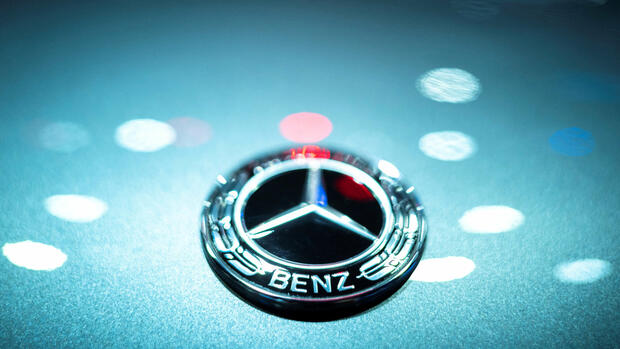Vienna Strict cost discipline and focus on luxury cars continue to boost profits at Mercedes-Benz. In the first quarter, the Stuttgart vehicle manufacturer achieved a surplus of more than four billion euros. This corresponds to an increase of almost twelve percent compared to the previous year. At the same time, sales increased by around eight percent – to 37.5 billion euros.
Mercedes has become “more weatherproof”, explained CFO Harald Wilhelm. The manager is therefore looking ahead a little more optimistically than at the beginning of the year, despite the economically uncertain times. He raises the return target in the van division and now expects a margin of eleven to 13 percent. Wilhelm had previously promised nine to eleven percent for the small van business.
Mercedes leaves the margin target in the dominant auto division unchanged at twelve to 14 percent. At the same time, Wilhelm now expects a result “at the upper end of the range”. For the entire group, however, the former Airbus CFO remains on the conservative side. The turnover of the Swabians should therefore stagnate and the operating profit should fall slightly.
Last week Mercedes previously announced an operating profit of 5.5 billion for the business in the first quarter and free cash flow of 2.2 billion euros. Both figures were well above analyst estimates. The capital market experts were particularly pleasantly surprised by the results in the small van division.
The unit slipped deep into the red in the wake of the diesel scandal a few years ago. In 2019, the loss was more than three billion euros. The turnaround was quick, but the division, which counts cool-headed craftsmen and delivery services among its customers, always lagged behind the car division in terms of profitability. Now, suddenly, the commercial vehicle managers have the edge.
Van division increases by a quarter
Van boss Mathias Geisen was able to more than double the operating profit in the first quarter to 762 million euros compared to the previous year. Sales increased by a quarter and are now over 4.6 billion euros. The return shot up from 9.4 to 16.5 percent. The margin in the auto division, on the other hand, shrank by 1.6 points to 14.9 percent compared to the same quarter of the previous year.
Either way, both industrial units of Mercedes continue to operate at a historically uniquely high level of profitability. Just a few years ago, a double-digit margin in both the passenger car and van sectors at Mercedes seemed unimaginable. This is now the new standard.
The main reason for this is the luxury strategy of CEO Ola Källenius. The Swede has been pushing the sale of particularly noble and expensive models for years. These include, above all, the S-Class and the GLS in the noble Maybach variant at basic prices in excess of 173,000 euros.
Sales of such high-end brands increased by almost a fifth in the first quarter. In particular, the makes of AMG were in demand. The tuning subsidiary achieved a new sales record with more than 40,000 vehicles sold. The G-Class was also very popular, with sales growing to over 10,000 units. Overall car sales, on the other hand, only increased by around three percent.
Meanwhile, Mercedes was able to increase deliveries of vans by almost twelve percent from January to the end of March – to around 99,000 units. There was particularly strong demand for large models that generate high profit margins, such as the Sprinter panel van or the V-Class MPV.
Rising interest rates are becoming a problem
The finance division Mercedes-Benz Mobility is meanwhile struggling with the increased interest rates. First-quarter sales shrank slightly to 6.6 billion euros, while operating profit fell 27 percent to just 539 million euros. At 15.6 percent, the return on equity is already well below the previous year’s figure and is likely to continue to fall.
For example, Mercedes expects the sale of its business in Russia as a result of the Ukraine war to have a negative effect “in the low three-digit million euro range” in the Mobility division. Overall, the return on equity at the end of the year in the financial sector should only be twelve to 14 percent.
The turbulence in the American and European banking sector as a result of the bankruptcy of the Silicon Valley Bank and the takeover of Credit Suisse by UBS are causing uncertainty, stresses Mercedes. The growth momentum of the global economy remains subdued. Especially in Europe, incoming orders are “subdued”. In the USA and China, however, business is picking up, and the supply bottlenecks of previous years, for example for semiconductors, are also continuing to resolve.
In view of the uncertain situation, Mercedes boss Källenius continues to focus on cost efficiency. The prices for raw materials such as steel or light metals would remain at a high level, he recently warned his executives internally. “In addition, the cost burden of battery raw materials is increasing,” explained the Scandinavian. That’s why you shouldn’t let up on saving now.
More: This is how Mercedes, VW and Co. want to turn their lame e-car business in China
